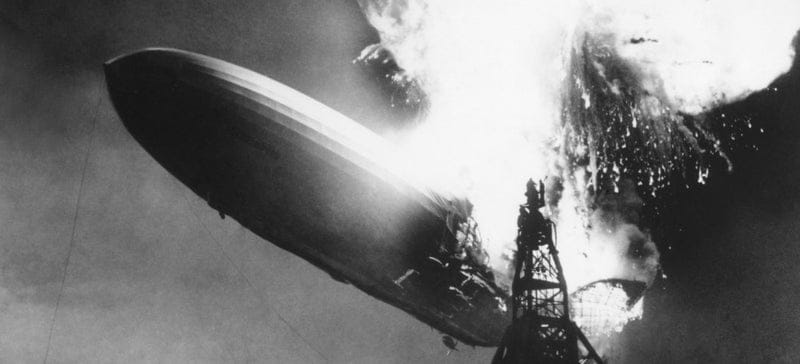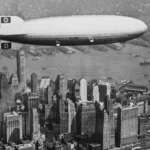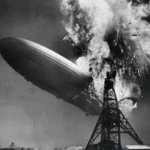The Hindenburg disaster, a catastrophic event on May 6, 1937, transcended the loss of life, becoming a chilling symbol of the ethical considerations inherent in technological advancements. The fiery demise of the massive airship, while attempting to dock at Lakehurst, New Jersey, raised profound questions about responsibility, risk assessment, and the potentially devastating consequences of unchecked ambition.
Ethical Concerns Surrounding the Hindenburg Disaster
The Hindenburg disaster serves as a stark reminder that technological progress without adequate safety measures can lead to catastrophic results. The choices made in the airship’s design, construction, and operation highlight the ethical dilemmas faced when pushing the boundaries of innovation.
Was Safety Sacrificed for Progress?
The Hindenburg, a marvel of engineering for its time, was also a disaster waiting to happen. The use of hydrogen, a highly flammable gas, as the lifting agent was a known risk. While hydrogen provided greater lift capacity compared to the safer alternative, helium, its flammability made the Hindenburg inherently vulnerable.
This decision highlights a crucial ethical question: to what extent were safety concerns overlooked in favor of achieving groundbreaking technological advancements? Some experts suggest that the allure of creating the largest and fastest airship overshadowed the potential risks associated with using hydrogen.
Were Design Flaws Ignored?
Beyond the choice of lifting gas, the Hindenburg’s construction itself has been scrutinized for potential design flaws. The airship’s frame, constructed from a lightweight aluminum alloy, though strong, offered limited heat resistance. The outer skin, primarily cotton fabric coated with a flammable material, further increased the risk of fire.
These design elements, combined with the highly combustible hydrogen, created a perfect storm for disaster. Some experts believe that these vulnerabilities, combined with the potential for static electricity buildup, created a situation where a single spark could have catastrophic consequences.
Was There a Cover-Up?
The aftermath of the Hindenburg disaster was further marred by allegations of a cover-up. Some evidence suggests that critical information regarding the airship’s safety may have been suppressed. These allegations raise concerns about transparency and accountability, suggesting that maintaining a public image may have taken precedence over addressing potential design flaws.
The Hindenburg disaster investigation uncovered that a spark from its exhaust ignited leaking hydrogen gas, but this may not have been the only factor contributing to the disaster. It’s possible that inadequate Zeppelin safety regulations also played a role, bringing into question the wisdom of using hydrogen as an airship fuel.
What Was the Fatal Flaw of the Hindenburg?
Pinpointing a single fatal flaw in the Hindenburg is like trying to identify the weakest link in a chain destined to break. The airship’s demise was the result of a series of seemingly calculated risks and unfortunate circumstances converging tragically.
The most significant factor was undoubtedly the use of hydrogen for lift. While providing superior lift compared to helium, hydrogen’s extreme flammability made it a constant threat. Evidence suggests that the decision to utilize hydrogen stemmed from a combination of economic and technological factors; it was cheaper and more readily available than helium.
Compounding this inherent risk was the Hindenburg’s structure. The lightweight aluminum frame and flammable outer skin, while contributing to the airship’s impressive size and speed, proved woefully inadequate for containing a hydrogen fire.
Additionally, there were allegations, though never definitively proven, of potential safety oversights during construction and maintenance.
What Went Wrong in the Hindenburg Disaster?
The events leading to the Hindenburg disaster can be traced back to a complex interplay of design choices, external factors, and perhaps, human error.
The airship’s reliance on highly flammable hydrogen gas is widely considered the most crucial element in the tragedy. This, coupled with the use of flammable materials in its construction, turned the Hindenburg into a potential inferno waiting for a spark.
While the exact ignition source remains a subject of debate, the prevailing theory suggests that an electrostatic discharge – likely triggered by atmospheric conditions during its attempted landing – ignited leaking hydrogen. The fire spread rapidly through the airship’s structure, engulfing it in flames within seconds.
Contributing to the disaster’s severity was the lack of adequate safety measures aboard the airship. The absence of sufficient fire suppression systems and escape routes sealed the fate of those on board.
What are Some of the Theories About Why the Hindenburg Disaster Happened?
The Hindenburg disaster, despite extensive investigations, remains an event shrouded in mystery and speculation. While the scientific community generally accepts that an electrostatic discharge ignited the fire, the lack of definitive proof has fueled numerous theories over the years.
- Atmospheric Conditions: The most widely accepted theory points to an electrostatic discharge, likely sparked by the stormy weather conditions prevalent during the Hindenburg’s attempted landing. This theory suggests that a buildup of static electricity on the airship’s outer skin, combined with leaking hydrogen, created the perfect environment for ignition.
- Lightning Strike: Another theory proposes that the airship was struck by lightning, igniting the hydrogen. While no direct evidence supports this theory, the presence of thunderstorms in the vicinity of the disaster lends it some credence.
- Sabotage: The political climate of the time, with the Nazi party in power in Germany, gave rise to theories of sabotage. Some speculate that the Hindenburg, a symbol of German technological prowess, may have been targeted by individuals or groups opposed to the Nazi regime. However, no concrete evidence supports these claims.
The Hindenburg disaster, while a tragedy, prompted significant advancements in airship technology. Subsequent airships incorporated safer materials, non-flammable helium replaced hydrogen, and more stringent safety regulations were implemented. The disaster serves as a stark reminder of the importance of prioritizing safety, accountability, and ethical considerations in the relentless pursuit of technological advancement.

















1 thought on “The Hindenburg Disaster: Unpacking the Ethical Concerns of a Tragedy”
Comments are closed.